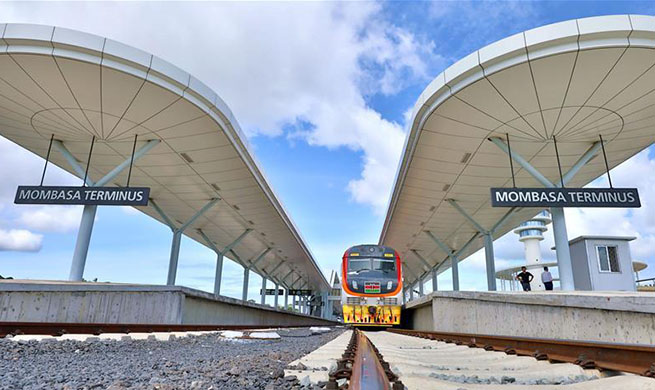BEIJING, June 17 (Xinhua) -- While China's May economic data suggested overall economic resilience, a glimpse into the physical indicators may provide more details of the positive changes taking place in the economic picture.
Growth in energy consumption, freight traffic, and producer prices all picked up last month, pointing to a firming real economy and progress in structural transformation.
In May, China's industrial electricity use increased 10.8 percent from a year ago, picking up from the April level of 7.3 percent, according to data from the National Bureau of Statistics (NBS).
"This reflects stronger industrial production activities," said Wen Jianwu, head of NBS's department of industrial statistics.
Meanwhile, freight volume, an indicator of goods production and consumption, increased 8.5 percent year on year last month. Railway freight in particular jumped 11.8 percent, 10.4 percent higher than the growth in April.
Last month also saw stronger demand for industrial products, which pushed up the producer price index (PPI), a measure of industrial product inflation, by 4.1 percent year on year, the highest growth in four months.
Niu Li, an economist with the State Information Center, said physical indicators like energy use and freight traffic can be seen as leading economic indicators, and their healthy growth reflects a strengthening trend in the real economy.
Data from some less official sources has also showed encouraging signs. Sales by China's major excavator producers grew sharply by 71.3 percent year on year in May, according to the China Construction Machinery Association.
At Sany Heavy Industry Co., Ltd., a heavy machinery manufacturer, the working hours of heavy equipment including mixing stations, pumping trucks, and hoisting equipment was on the rise. In the first five months of this year, Sany's cranes worked 13.9 percent longer compared with the same period in 2017 as expansion in manufacturing investment has kept machines busy.
This was in line with official investment figures. NBS data showed that fixed-asset investment in manufacturing climbed 5.2 percent in the first five months, up from 4.8 percent for January-April.
Continued expansion in manufacturing investment provides evidence of China's restructuring progress, as manufacturing upgrading is part of the country's ongoing structural reform that aims to draw more strength from consumption, services, and innovation to support growth.
Amid efforts to drive innovation, the output of China's high-tech and equipment manufacturing sectors substantially outpaced last month's industrial average, with production of new energy vehicles, integrated circuits, and robots up 56.7 percent, 17.2 percent, and 35.1 percent, respectively.
For the service sector, China's Index of Services Production went up 8.1 percent last month, with modern emerging service industries such as the internet industry contributing up to 56.8 percent to the service sector growth, according to the NBS.
In another sign of booming new businesses, electricity consumed by the software and information technology industry jumped 66.05 percent year on year in the January-May period, while that of the internet service industry rose 63.26 percent.
NBS spokesperson Mao Shengyong said at a press conference earlier this week that the country's supply side structural reform had prompted robust emerging sectors and sustained growth in the broader economy.
Earlier data showed China's economy expanded 6.8 percent year on year at comparable prices in the first three months.
Wang Changlin, vice president of the Academy of Macroeconomic Research of the National Development and Reform Commission, said he sees progresses in economic upgrading and firming trend in real economy.
But he noted that it takes time for high-tech manufacturing to play a key role in the economy, and China is still facing structural problems in developing the real economy.
Mao also said that the government would work to further improve the management system and market environment, with a priority on supporting private enterprises and small and medium-sized ones.

















